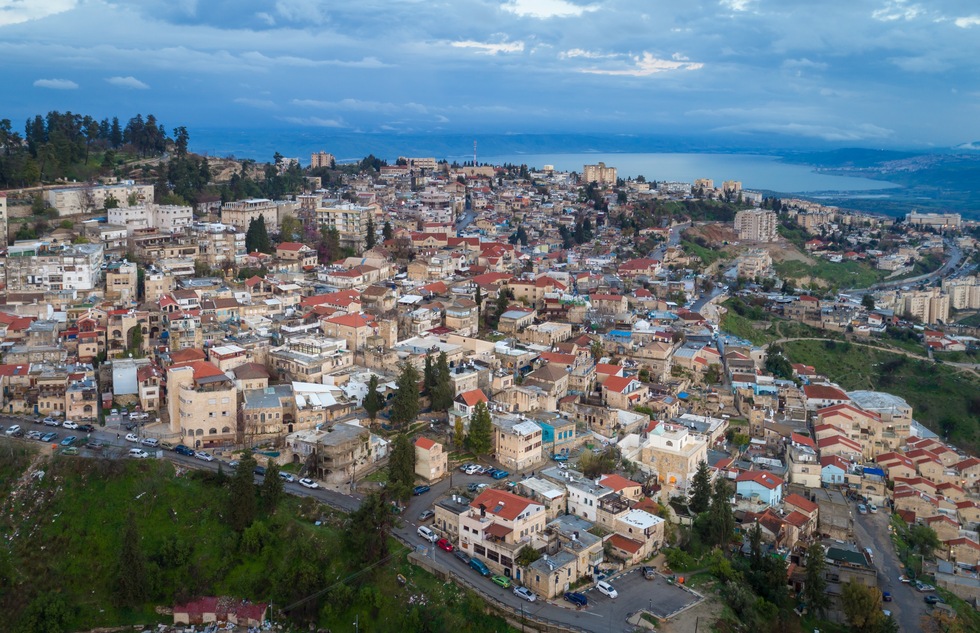36km (22 miles) NW of Tiberias; 74km (46 miles) E of Haifa
Our next destination is the medieval, mystical town of Safed (Zefat, Zfat, Tsfat, Tzfat), about 40 minutes northeast of Tiberias. Beginning in the 15th century, Safed was known for its Jewish scholars and visionary mystics. At 837m (2,746 ft.), its Israel’s highest town.
For a while in the 1950s and 1960s, the town became Israel’s major summer mountain resort, attracting secular and religious vacationers who enjoyed Safed’s quant side streets, artists’ galleries and cool nights. Today Safed is once again very religiously oriented, and it can be a problematic stay for visitors, due to limited parking, restaurants and accommodations. But the beauty of Safed’s mountain location and its history as a center for Jewish mysticism and Kabbalah combine to create a special aura to the town and make it memorable if you give it time and a bit of effort.
Safed’s known history began in a.d. 66, during the time of the First Jewish Revolt Against Rome, when the rebel Jewish commander, Flavius Josephus (who later went over to the Romans and became a noted historian) started building a citadel on the mountaintop in the center of Safed. In 1140, the Crusaders again built a fortress on this peak, the ruins of which can be seen today. But whatever early communities existed here in those centuries were small and unimportant.
During the 16th century, the Ottoman Turks chose the town of Safed for the provincial capital, and it became the primary government, economic, and spiritual center for the entire Galilee region. It was during this period that Sephardic Jews from Spain came here. Having escaped the horrors of Spain under the Inquisition, many of these Jewish scholars and intellectuals launched into a complex and mystical interpretation of the Hebrew scriptures called kabbalah. The town became a great center of learning, with a score of synagogues and religious schools. The first printing press in the East was introduced here during this period of scholarship and mysticism, and in 1578 the first Hebrew book—a commentary on the Scroll of Esther—was printed. During this golden age of Safed, less-mystical groups of Ashkenazi Jews were also attracted to Safed, and the entire community and its rabbinical scholars became renowned and revered throughout the Jewish world. At its height, the Jewish community numbered about 10,000, but by the 18th century, Safed was in serious decline.
In 1837, the entire town was leveled by a powerful earthquake after which both the Jewish and Muslim communities of Safed struggled on in increasing poverty. The wave of anti-Jewish rioting that swept British Mandate Palestine in 1929 was particularly severe in Safed, where the Jewish population was mainly elderly and religious. During the 1948 War for Israel’s Independence, control of the strategic heights of Safed was crucial to control of the Galilee. Although outnumbered, Israeli forces held the town, and the large Arab population of Safed fled amid panic and rumors. Since then, the center of Safed (pop. 30,000) has had three parts to its personality—a rather outdated resort town, an artists’ colony in the abandoned Arab neighborhood, and the long-established religious community. Until the 1970s, Safed, with its cool nights, was a favorite summer resort, but as Israelis became more international in their vacation habits, Safed’s tourism industry withered, and the once-vibrant Artists’ Quarter is now relatively quiet, all the better for those who decide to explore the town.
Note: This information was accurate when it was published, but can change without notice. Please be sure to confirm all rates and details directly with the companies in question before planning your trip.









